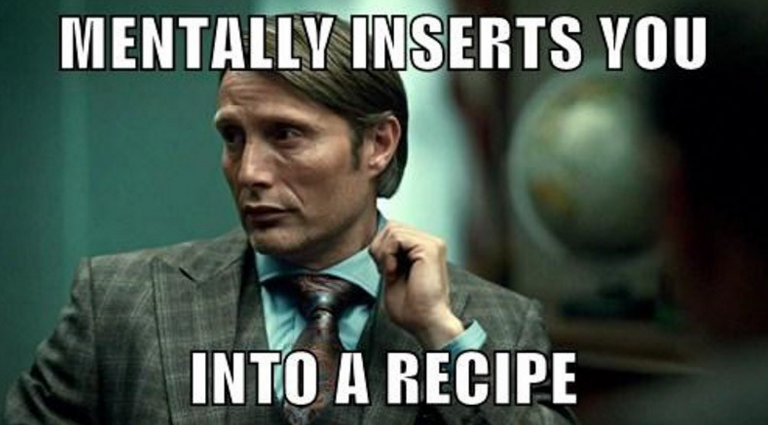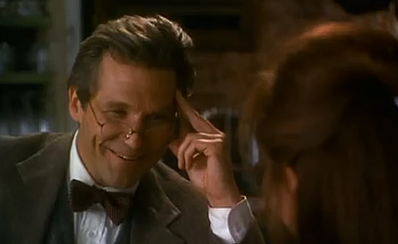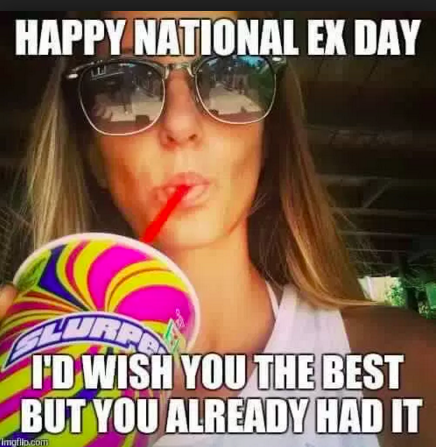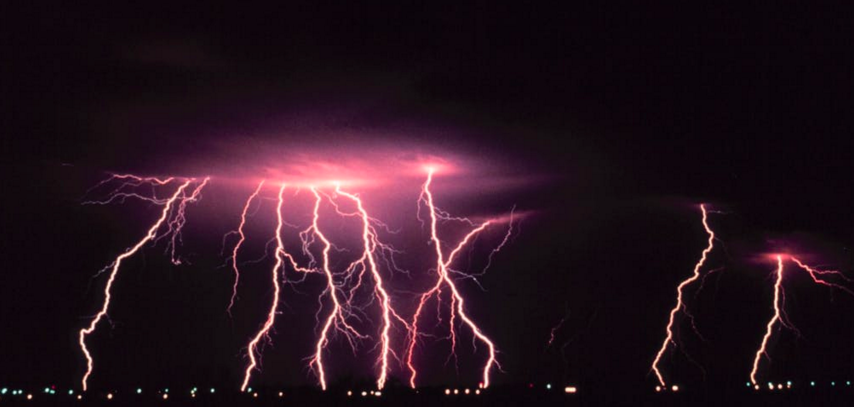
Every story begins with an idea. Alas, stories can only be created when at least two vastly different ideas collide. The place where they meet is the BOOM, much like the weather. Storms erupt because two very different bodies of air meet…and don’t get along.
Only one will win out. In the meantime, lots of rain, lightning strikes and maybe some tornadoes. After the powerful storms, the landscape is altered, lives are changed, some even lost.
It’s the same with powerful stories. Yet, instead of weather fronts colliding, differing ideas are colliding.
It’s wonderful to have a great story idea. Alas, an idea alone is not enough. It’s a solid start but that’s all. Loads of people have ‘great ideas’ and that and five bucks will get them a half-foam latte at Starbucks.
Ideas are everywhere.
What differentiates the author from the amateur is taking the time to understand—fundamentally—how to take that idea and craft it, piece by piece, into a great story readers love.
Building Ideas into Stories

Stories have key components required for building, and I promise we’ll get there. My goal, this go-round has been to elevate the teaching and deep-dive in a way I hope you’ve not experienced before.
I always found craft teaching either was so simplistic I was all, ‘Got it, sally forth.’ *taps pen* Or, the instruction was so advanced (assuming I was far smarter than I was) and it made me panic more than anything.
Like the ‘write your story from the ending.’ Sure, meanwhile, I’ll go build a semi-conductor.
There was this MASSIVE gap between X, Y, Z and why I was even doing X, Y, and Z. Why not Q?
And all to what end? How did I make all the pieces FIT? *sobs*

Anyway, this is why we’re taking things SLOWLY. I want to fully develop these concepts so you can create incredible stories far more easily. Yes, this is master class level stuff, but hopefully I will help mesh with 101 concepts so even beginners will feel challenged (as opposed to utterly LOST like I did).
For those new to this blog or anyone who wants to catch up, here are the lessons so far:
Structure Matters: Building Stories to Endure the Ages
Conflict: Elixir of the Muse For Timeless Stories Readers Can’t Put Down
The Brain Behind the Story: The Big Boss Troublemaker
Problems: Great Dramatic Writing Draws Blood & Opens Psychic Wounds
How to Write a Story from the Ending: Twisted Path to Mind-Blowing End
Ideas as Character Catalyst

When we discussed the BBT, I showed how all BBTs are an IDEA. This IDEA might manifest as a villain or as a core antagonist. The core antagonist only different from a villain in that this person’s goal is not inherently destructive, evil or nefarious. Their idea(s) simply conflicts with what the protagonist’s idea(s) and what the MC believes he/she desires.
This antagonist generates a core story problem BIG enough to shove the protagonist out of the comfort zone and into the crucible. This pressure (problems) creates heat which is the catalyst that creates the cascading internal reaction which will fundamentally alter the protagonist.
These internal changes are necessary for victory over the story problem via external action (choices/decisions). The MC cannot morph into a hero/heroine carrying emotional baggage, false beliefs, or character flaws present in the beginning. Why?
Because these elements are precisely WHY the MC would fail if forced to battle the BBT head-on in the opening of the story.
The story problem, and what it creates, is like a chemical reaction. Our protagonist, by Act Three should transform into something intrinsically different…a hero/heroine (a shining star instead of a nebulous body of gas). The problem should be big enough that only a hero/heroine is able to be victorious.
Villains as BBT

Villains are fantastic and make some of the most memorable characters in fiction whether on the page, stage or screen (Joker, Buffalo Bill, IT, Dr. Moriarty, Cersie Lannister, etc.). A common misperception, however, is villains are ‘easy’ to write. No, mustache-twirling caricatures are easy to write. But villains, villains that get under our skin, who poke and prod at tender places take a lot of preparation and skill.
Dr. Hannibal Lecter is extremely dimensional. We, the audience, are conflicted because he’s horrible, grotesque, cruel… and suddenly we find ourselves rooting for him.
That seriously messes with our heads.
Dr. Lecter has an IDEA of polite society. Act like a proper human and be treated like one. His IDEA of what a human is entails all that separates us from animals, namely manners and self-control. Act like a beast, and beasts–>food.
This cannot help but conflict with any FBI agent’s duty to protect all lives (deserving or not), and help mete out justice in all homicides (even of those horrible folks we’re all secretly happy Hannibal made into a rump roast).
All I can think is thank GOD Lecter is fictional or half the folks on Facebook would now be curing world hunger.
Anyway….
Superb characters are never black and white, right or wrong because that’s an inaccurate reflection of humanity.
We (the audience) sense the falseness of such a simplistic character, and, while one-dimensional characters (villains included) can be amusing for a time, they’re not the sort of character that withstands the test of time. They don’t possess enough substance/dimension/gray areas to elicit heated debate and discussion among fans for years to come.
But villains are not ideal for all stories or all genres.
Core Antagonist as BBT

There are what people call character-driven stories which don’t require a villain. I twitch when I hear the term ‘character-driven’ because too many mistake this as a pass for having to plot. NOPE. We still need a plot 😉 .
Plot is what will drive the character change.
I’ve used the examples Steel Magnolias and Joy Luck Club in other posts so we’ll pick a different one today. The Mirror Has Two Faces is one of my favorite examples.
The BBT in this story is the IDEA that physical beauty is bad. This IDEA is manifested in the story problem, which is created by Professor Gregory Larkin. He believes he knows why he’s always been unlucky in love.

He’s attracted to her…mind.
Being an analytical Mathematics teacher at Columbia he gets a bright idea. He believes superficial attraction and sex is what has ruined all his relationships (and is partially correct).
He theorizes that physical attractiveness always undermines authentic intimacy. Thus, he postulates a solution. Find and date a woman he finds completely physically unappealing. Then he’ll find true love (Story Problem).
Enter in Professor Rose Morgan, a shy, plain, middle-aged professor who teaches literature also at Columbia. Ah, but Rose also happens to have a stunning older sister and a mother who was model-gorgeous in her heyday, a mother who always has to be the center of attention.
Gregory Larkin believes he can only find love without physical beauty, that physical attraction has only a bad ending.
Close, but No Cigar

Rose Morgan also has issues with beauty, though is not actively aware of it initially. Her mother’s obsession with her own beauty has propelled Rose to demur and become a wallflower. She dresses in frumpy clothes, wears no makeup, doesn’t exercise and does nothing with her hair.
Namely, she doesn’t want to compete with Mom. Mom’s distorted overvaluation of physical beauty has created an equally distorted devaluation of physical beauty in Rose.
When Larkin asks Rose out and the relationship blooms enough for them to marry, it seems his theory is sound. Rose wants to believe she’s okay with this. That she is okay that she was picked because she was utterly unattractive on the outside.
Sure, it stings, but in the end, does it matter? They are close, share similar interests, enjoy each other’s company and she’s no longer terminally single.
Only once married, does Rose realize she’s sold herself short in a big way.
She didn’t believe she longed for Puccini and romance and lust and for a man (her husband) to want her. That was for ‘pretty girls’ and she was lucky to even be picked at all. Right?
Right?
Wrong

One night, Rose presses Gregory for sexual intimacy and he freaks out. He rejects her advances, and is angry at her for upsetting his tidy formula for lasting love.
This crushes Rose.
Rose believes she repulses him, but is very wrong. He did want her, probably more than any woman ever before. Yet, he still clings to his false IDEA. He remains undeterred that physical attraction/relations will ruin true love. He leaves right after this disastrous night for a lengthy lecture tour.
Rose finally faces her fear of being pretty and her false beliefs that she a) is not pretty and b) does not deserve to be pretty. She cleans up her diet, gets her hair done, changes her wardrobe and wears makeup. She feels differently and notes others treat her differently, too.
Gregory also does some soul-searching and starts pondering he might be wrong. Maybe outer beauty does not instantly negate inner beauty. Perhaps beauty, physical attraction, lust wasn’t the problem. He was.
Maybe.
Showdown Between the Ideas

Gregory returns to NYC and sees Rose has bloomed. She’s a very different wife inside and out. Not only is she stunning, but she’s now confident and knows what she wants, what she deserves.
She apologizes for her part in the problem. Confesses she never should have agreed to a passionless marriage. She thanks him for helping her see her own cowardice, but in truth she wants passion and Puccini, love and sex and more than marriage melba toast.
Gregory is dumped…again.
This forces him to take a hard look at himself and his ‘theory.’ He’s forced to choose between his ‘flawless theory of perfect love’ or Rose.
Will he let Rose dump him and go in search of an even more physically unattractive female? Or will he ditch his theory and woo Rose back?
Ideas as Weather Fronts

What happens when a cold front meets with a hot front? A STORM! Same in stories. This is why it’s critical to understand the BBT and the proxy carrying out the idea. It’s why it’s just as vital to understand the protagonist and his or her IDEA to be challenged.
Like in weather the colder and drier the cold front and the hotter and moister the hot front, the bigger the BOOM.
Thus once you’ve selected the IDEAS that will clash and what sort of characters will serve as the delivery mechanisms, make sure to choose who will suffer/change the most. The higher the stakes the better the story.
Also ask (for both sides):
What does he/she want? Why does he/she want it? Why now? What happens if he/she fails to get what they want?
When we articulate these and craft these ahead of time, we can make sure to pack as much punch into the plot as possible. No reader wants to invest 12-15 hours into a story where there are low stakes or no stakes. Where no one changes. ZZZZZZ.
Y’all might laugh, but I’ve edited many a work with no stakes. When I asked the writer, ‘What happens if she doesn’t find out the secret?’ Usually, I got, ‘She um…just doesn’t?’
Nope. That isn’t a story, it’s a sedative.
À la fin…

Ennui Cat says love is for fools and brings only pain. He’s judging your book…and you.
But mostly you.
In the end, think how many weather metaphors we use when talking about people and conflict. A storm’s brewing. Lightning rarely strikes twice. Could feel the crackle in the air.
If conflict is thought of like storms, then reverse engineer this. How do storms work? What makes them bigger and nastier? Use this to help add power to your plot problem.
For anyone who longs to accelerate their plot skills, I recommend my On Demand Plot Boss: Writing Novels Readers Want to BUY. Two hours of intensive plot training from MOI…delivered right to your computer to watch as much as you like 😀 .
Or to make stabbing motions at my head with a pen. Die! Die! Kristen we loves you but hates you!
I also am offering my Bullies and Baddies: Understanding the Antagonist on March 29th (7-9 EST) recording included with purchase if you can’t make it. This class is for in-depth training on how to balance all types of antagonists for maximum impact.
What Are Your Thoughts?
Does this help make plotting a tad less intimidating? Are you perhaps seeing where/why your previous idea floundered? Didn’t realize you needed at least TWO for a story?
Where do you struggle? Because we ALL do. What you want to know more about? Where you get stuck, etc.
I look forward to helping you guys become stronger at your craft. What are some of your biggest problems, hurdles or misunderstandings about plot? Where do you most commonly get stuck?
I love hearing from you!
And am not above bribery!
What do you WIN? For the month of March, for everyone who leaves a comment, I will put your name in a hat. If you comment and link back to my blog on your blog, you get your name in the hat twice. What do you win? The unvarnished truth from yours truly. I will pick a winner once a month and it will be a critique of the first 20 pages of your novel, or your query letter, or your synopsis (5 pages or less).
***Will announce February’s winner next post.
By the way, yes I also offer classes, and so does my partner-in-crime USA Today Best-Selling Author Cait Reynolds does, too. We both want y’all to write amazing books because that means more word of mouth sales, and a world with better books.
Alas, we still should learn the business of our business so I hope y’all will check out the classes below.
NEW CLASSES (AND SOME OLD FAVES)!
Check them out at W.A.N.A. Int’l.
- Thursday, March 8, 2018. 7-9 p.m. EST. $45.00 USD.
- Friday, March 9, 2018. 7-9 p.m. EST. $65.00 USD.
- Thursday, March 15, 2018. 7-9 p.m. EST. $50.00 USD.
- Friday, March 16, 2018. 7-9 p.m. EST. $50.00 USD












7 comments
4 pings
Skip to comment form
Why now?
Why now?
Ok, I’ve got a bit more thinking to do here.
Thanks.
I love the idea of ideas clashing. It is awesome. I’m a big fan of rivalries, and face offs, so why not ideas?
These posts are incredibly helpful, thank you Kristen. I can finally see what the actual theme of my story is, or rather, what it will be with only about an 80% rewrite! Kidding. The colliding ideas as a source of conflict rather than just superficial conflict is the breakthrough concept I’ve needed for five years, thank you.
What does he/she want? Why does he/she want it? Why now? What happens if he/she fails to get what they want?
Your blogs are gold. Easy to read and easy to understand. You’re translating writing into an understandable language. Thank you!
Thanks so much Abbie. Xx
The advice is wonderful, as I’d expect from you. My first story came from a simple 200 words flasher, but it came as the middle. It wasn’t long before I had figured out the ending and was off on the 30K little piece to find their beginnings. My current WIP is much like you described. I began with the ending knowing where my MCs would be and where/who the true BBT would be in all this. I mixed it up by having two others who could be BBTs as central antagonists. Then I threw the reader to the rails with hints on something sort of profound while revealing a flaw in the works to make you question the importance and true nature of the ending place in the story. At least I hope it works that way. Your classes always teach a wealth of info while having a lot of fun.
Thank you for the compliment Solomon.
[…] https://authorkristenlamb.com/2018/03/when-ideas-collide-storms-and-stories/ “Every story begins with an idea. Alas, stories can only be createdwhen at least two vastly different ideas collide. The place where they meet is the BOOM, much like the weather. Storms erupt because two very different bodies of air meet…and don’t get along.” This is sound advice. […]
[…] When Ideas Collide: Powerful Storms Make Superior Stories […]
[…] Amber Lea Starfire shows how to discover your memoir’s underlying themes, Kristen Lamb examines how the collision of powerful ideas makes superior stories, and Jami Gold examines theme development in your […]
[…] alone holds the power to bestow […]